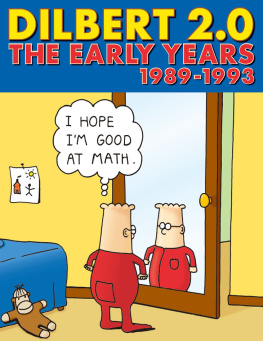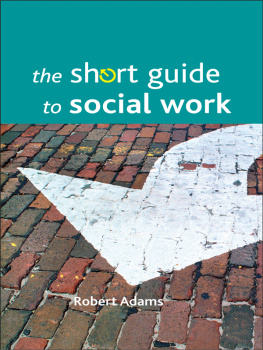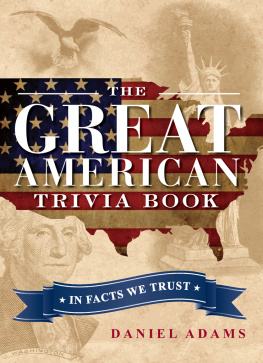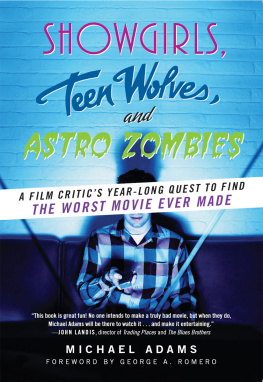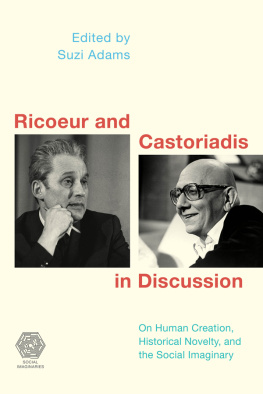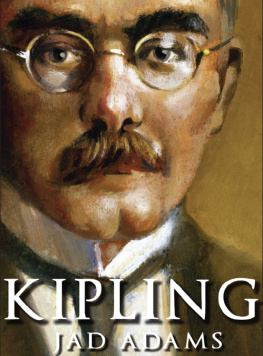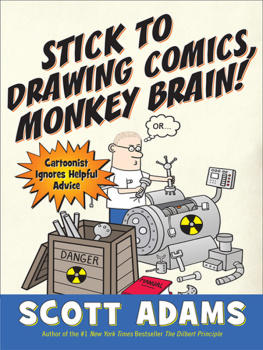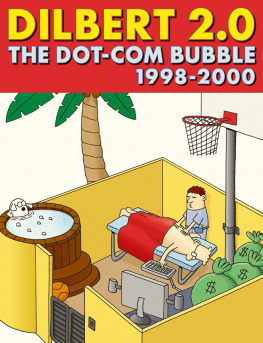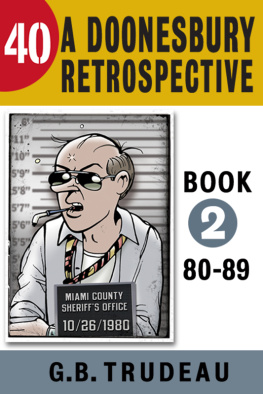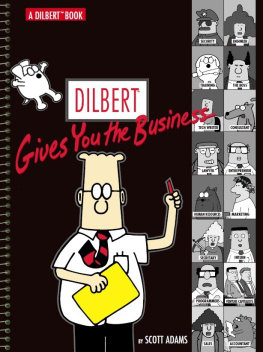For Jack Cassady
Thank you for the advice.
DILBERT is a registered trademark of Scott Adams, Inc.
Licensed by United Feature Syndicate, Inc.
DOGBERT and DILBERT appear in the comic strip DILBERT , distributed by United Feature Syndicate, Inc., and owned by Scott Adams, Inc.
Licensed by United Feature Syndicate, Inc.
Dilbert 2.0: The Early Years copyright 2008, 2012 by Scott Adams, Inc. All rights reserved. Licensed by United Feature Syndicate, Inc. No part of this book may be used or reproduced in any manner whatsoever without written permission except in the case of reprints in the context of reviews. For information, write to: Andrews McMeel Publishing, LLC, an Andrews McMeel Universal company, 1130 Walnut Street, Kansas City, Missouri 64106.
ISBN: 978-1-4494-2295-0
Library of Congress Control Number: 2008927324
www.andrewsmcmeel.com www.dilbert.com
ATTENTION: SCHOOLS AND BUSINESSES
Andrews McMeel books are available at quantity discounts with bulk purchase for educational, business, or sales promotional use. For information, please email the Special Sales Department: .
Produced by Lionheart Books Ltd., 5200 Peachtree Rd., Atlanta, Georgia, 30341
Designed by Michael Reagan
Introduction
by Scott Adams
Dilbert appears in 2,000 newspapers and is translated into 23 languages in 70 countries. There are over 20 million Dilbert books and calendars in print.
When I sat down to organize this twentieth-anniversary book, I wondered how best to tell the tale. I knew I could do it in a variety of ways. But I thought the most interesting way would be to explain the unlikely combination of events that put me, and then Dilbert , in the right places at the right times. Lets start at the beginning.
1957Born
You can never be sure how much of what you become is due to nature versus nurture. My mother was a successful landscape artist in her spare time, so I probably inherited some of her artistic DNA, evidently mutated. I also have my dads sense of humor and his economical way with words. The building blocks for Dilbert were in place early.
I probably got my stubbornness from both sides of the family, which I prefer to call persistence. My parents work ethic was also baked into me at a young age. I come from a long line of hard workers who believe that having only one full-time job per day is the same as slacking.
1963 Peanuts Books
My uncle owned a farm just up the road. When we visited, I would head straight for his collection of Peanuts paperback books. I became obsessed with them, even before I could read or under-stand them. They had the x-factor. There was just something about them that was special and amazing. I was hooked for life.
My parents always told me I could grow up to be anything I wanted to be. I decided to grow up to be Charles Schulz. Surely the world had room for two of him. And after all, how hard could it be? You draw pictures, you write some wordsit seemed like easy work to me. And from what I heard, the pay was good. I decided to start right in on my new profession.
Between the ages of six and nine, I drew a comic featuring creatures I named Little Grabbers, which was the phrase my dad often used to describe children. I imagined my characters as the tiny gremlins who were responsible for all the things that went wrong in the house and had no other explanation. My mother saved my early drawings from that period.
Here we see the Little Grabbers leaving the phone off the hook, spilling ink, and causing trouble. In the masterpiece on the previous page, the Little Grabbers are accelerating the decomposition of a flower arrangement. Luckily they have their own helicopter for this sort of work.
By about the age of eleven, I was influenced primarily by MAD magazine, and by the single-panel comics in other magazines. Drawing single-panel comics didnt look that hard, so I tried making some of my own. In the hilarious work here, a hunting dog fails to notice a rabbit.
In this knee-slapper, a prisoner tries to tunnel to freedom with a spoon, and hits oil. Its sort of a good news-bad news situation. I was not yet a master of perspective.
Around this time I acquired a book on cartooning. I spent countless hours with it, often practicing the drawing of human hands, which are especially hard to get right. Thats part of the reason Dilbert characters have five digits on each hand while most comics characters have only four. Once I learned how to draw hands, I didnt want to squander that ability on four-digit mutants.
I can trace Dogberts origin back to my own family dog, Lucy, who was mostly beagle. Lucy never once came when called. And she was indifferent to everyone in the family except my mom, who fed her. In the drawing here, they are enjoying some quality time. It is no coincidence that later I developed a dog character with floppy ears that disdains humans.
1967Cereal Box Contest Winner
One day I noticed a contest on the back of a cereal box: draw a picture of the geyser Old Faithful, and you could win a TV. There were also a number of runners-up prizes, including some cool-looking cameras. I entered the contest, confident I would win some sort of prize. My mother noticed my misplaced optimism and cautioned against getting my hopes up, explaining that thousands of kids would enter the contest, and only a few would win prizes. I remained confident despite the warnings, in a way that only people with no life experience can be.
I won a camera. The camera was made entirely of plastic, but it worked. I was thrilled. I started to suspect that beating long odds wasnt as hard as it seemed. This became a pattern that repeated itself throughout my life.

